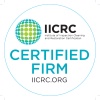Along with the unique issues that arrive when performing restoration services in hospitals, there are numerous departments that play important roles in the process, each of which has its own concerns. Just a few include:
- Medical Department
- Health and Safety
- Nursing Department
- Risk Management
- Infection Control
- Maintenance
- Administration
- Building Operations Center
 Housekeeping
Housekeeping
Each of the departments mentioned have a particular set of requirements to be met, along with corresponding deadlines. Specific protocols are often necessary for each depending on their needs.
All the departments will make important decisions based on the information provided by the restoration company. For example, the Nursing Department may schedule more hours so that patients can be moved. Risk Management and Infection Control will be tracking the time passing since the incident occurred to monitor microbial growth. The Maintenance staff and Building Operations Center may have overtime to assist with mitigation.
In order to ensure that restoration runs smoothly, exceptional communication is needed between the restoration company and the hospital’s departments. Documenting details by keeping thorough records is also extremely important.
The plan devised by the restoration company must take into account the segregation of affected areas and the relocation of patients. It is also imperative to provide thorough diagnostics as quickly as possible to determine which components are salvageable. A thermal imaging camera if often useful to quickly find damage.
All items with mold damage, electrical damage or questionable integrity will need to be discarded, and extra care is needed when using drying equipment in any hospital or healthcare facility.
Blueprints of the affected areas that provide a more specific overview should be obtained to aid in mapping of migrating water. Suspect material in the components, such as asbestos, can be found regardless of the age of the building. It is important to consider whether drying the asbestos fireproofing is the optimal choice or if re-insulating is necessary. Also, the restoration company’s investigation should determine whether the drying procedure will compromise the integrity of the fireproofing capabilities and structural integrity of the insulation.
The ultimate goal after restoration has been finished is for the documentation to be completed and clearance to be obtained. A third party should be used to avoid conflict when evaluating the efforts of the restoration company. A final, thorough cleaning is also vital to ensure the safety and health of those who will be re-populating the affected areas.
Damage Control has extensive experience in restoration and mitigation for hospitals and healthcare facilities, and is ready to help your facility today. For questions about hospital damage restoration, contact one of our professionals now.
